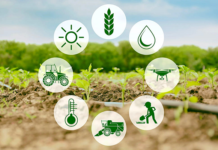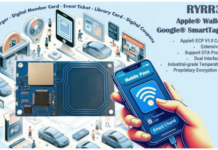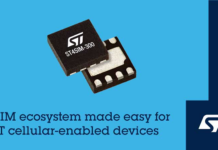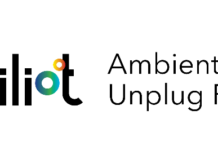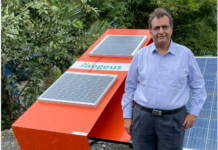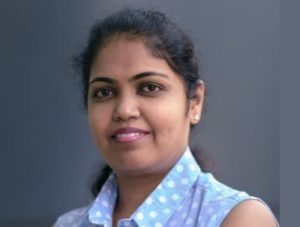
Electronics Media had an opportunity to talk with Ms. KAREN RAVINDRANATH, the Program Head – WebNMS IoT, a division of Zoho Corporation. She talked on various aspects of IoT and its ecosystem, How AR and Digital Twin technologies are complementing this ecosystem and share her intake on Data Flood issue.
Highlights:
- Parameters for selecting IoT Vendors
- Intake on data flood issue
- Digital Twin and AR are going to shape-up IoT
- IoT standardization and Government Regulations
- IoT business momentum in India
Edited Excerpts
Introduce the company WebNMS and your role within the organization to our readers?
Karen Ravindranath : WebNMS is the IoT division of ZOHO Corporation. WebNMS has been a leader in telecom sector and telecom network management since 1996 and for the last 5 to 6 years, the company has naturally transitioned into Internet of things focusing on products and solutions for IoT.
I am the Director of WebNMS, the division which focuses on IoT initiatives within Zoho corporation. WebNMS product line consists of IoT platform and a bunch of other vertical solutions, built over the same platform for different industries, eg., energy management solution, logistic & fleet management solution and remote asset management solution.
What is the most challenging issue for an IoT ecosystem?
Karen Ravindranath: This is the era of billions of connected devices and security is the forefront issue within IoT. Today everyone is concerned about security. Connecting data from the edge devices to the cloud, where it is stored, how the user gets to access it, whether it is authenticated or authorized to use that data- these questions are very important to ensure security within the IoT ecosystem. WebNMS being a platform focuses on end-to-end encryption security, the key aspect to consider by any decision maker looking for IoT application.
What parameter or suggestion should customers look for while selecting IoT vendors?
Karen Ravindranath: IoT is not a one-stop solution offered by a single vendor as there are hardware, connectivity, software etc. Thus, it is broadly an ecosystem. If a customer is looking for IoT solution, the best way to approach this is to look for partners or vendors who can bring this whole ecosystem together.
People who can connect this, end to end is required. Customers should look for broader ecosystem which includes partnerships between vendors providing hardware in place, compatibility between the hardwares, robust and secure cloud platform with capability or analytics which will go long way in future.
Broader ecosystem is one of the key reasons for WebNMS to accompany partnership with hardware vendors. We have a wide variety of partnership in sensor arena, edge analytics, edge layer, gateway vendors, because making sure that hardware is plug and play is crucial. Thus our customers don’t have to figure out each and every piece of the puzzle. This also ensures security as, once these gateways are certified by us and become compatible with our software, then there is no issue of security concerns for our customers as WebNMS has already worked it out.
Similarly, we have partnership with System integrators because most of the customers might not have end to end capability for deployment and maintenance. Deployment, commissioning and maintenance are taken care by System integrators who can bring end-to-end solution together easily, which is an important decision for people looking for IoT solutions.
You have been in industry for 17 years, Sensors were already there and IoT the buzz word has emerged some years back. What major change do you see now?
Karen Ravindranath: Initially sensors were already available and then came M2M and this transitioned into IoT. At the beginning these sensors were much localized were not connected to each and everything. They were confined within industry, (eg., within manufacturing unit) and the cost involved with these sensors was huge. Now it has transitioned into better connectivity with advancements and by 2020, 50 billion devices are expected to get connected. Such a scenario has brought down the prices of sensors, prices of connectivity and how data is exchanged. IoT has made data accumulation from different units, its comparison and its analytics easy. Today technology has advanced to a level where connecting these disparate systems have become easy and that is where IoT comes into play.
As billions of devices are connected, what’s your intake on data flood issue?
Karen Ravindranath: Data Flood is one of the key challenges – the velocity with which data is coming is huge we are going into exabytes which is equivalent to 1 billion gigabytes (GB), 1,000 petabytes (PB) or 1,000,000,000,000,000,000 bytes (B). The key challenges lies in identifying how this data can help newer business models and how it can solve problems in hand.
One of the key initiatives for decision makers trying to adopt IoT or looking for IoT application for their own company would be to focus on questions like – What kind of data are we getting and what kind of problems are being solved. Understanding how this data can add value and focusing on particular data, refining, analyzing and storing that data are key pointers. Therefore edge computing comes into play. We need a filter which can understand data and enable running AI very easily, identify anomalies and predict any faults or problems. So this is the direction people should focus for data flood issue.
Is WebNMS also working on projects enabling AI?
Karen Ravindranath: Yes, we perform analytics. This filters down the data and bring decisions to edge, so everything is not pushed to the clouds. Edge actually picks real-time action- it does some amount of analytics, makes decision, the analytics and Machine Learning (ML) stays at the edge and then data which is passed to the clouds passes many domains.
Edge is usually within a localized area of sensors but when it’s on cloud it’s across global domain. Analytics is performed on all accumulated data and then we do connected business which means pushing relevant data to other enterprise systems. Zoho offers other products as part of its ecosystem eg., ZOHO CRM, Business analytics tools, etc. Business models have changed, therefore AI capabilities help to productively analyse the data further and plug into the business enterprise system.
How recent technologies like digital twin and AR are going to shape-up IoT?
Karen Ravindranath: Let us take the example of connected cars and manufacturing units as they generate lot of data. Digital twin models virtual or digital image of this real-time assets. Digital twin can actually emulate the interactions and help to understand ecosystem not as a single machine but as a collaborated asset. It helps to develop certain machine learning models which collaborate different data together to get a more holistic approach.
AR is also driving IoT industry by providing information at the mobile front. Earlier we had information about assets in IoT system but now it has to bring that information into mobile front. Thus a person working in the field should be able to access data and AR helps then. It brings a lot of intelligence, not only from that person but from a number of experts. AR complements the data provided by IoT.
Do you think IoT standardization and Government Regulations are the need for an hour?
Karen Ravindranath: Definitely. In an IoT adoption lifecycle, people often ask about the present solution compatibility with possible future solutions and hardware. Standardization is the answer for this. Once we standardize protocols, communication, hardware, connectivity, application layer, and all other key aspects, the risk factor or fear regarding IoT adoption will disappear.
We cannot stand alone, IoT data has to add value to other enterprises. Earlier IoT adoption was seen with the risk associated but once standardization is involved, it will open up fast pace of IoT adoption. Customers are looking for security and privacy. Standardization and security will propel fuel to the momentum of IoT adoption. It is very important for government to bring fast pace growth in IoT by removing risk and help adoption.
How IoT business is getting momentum in India?
Karen Ravindranath: We have very reputed customers based out of India. We have customers in manufacturing who are looking to make their device smart and they were first movers in their respective domains. Companies are anticipating the dawn of the next IoT era and how they can adapt their products for the same.
WebNMS has partnered with them and helps them to launch their own smart product line. We also provide a complete application layer which can talk to their devices and combine solution being rolled out as next-generation IoT enabled smart devices. We have seen tractions in energy, logistics and manufacturing sector where people are looking for IoT. While some of our customers are launching their own products using our IoT platform, others are creating new business models for logistic service providers. WebNMS is associated with them to digitally transform data collection, billing, accounting, and end-to-end management and services to provide a complete ecosystem.
The world is moving towards IoT and any Indian business that wants to compete globally has to have strong IoT capabilities. WebNMS assists in making their IoT ecosystem robust. India is today growing in the B2B segment; enterprises are gradually adopting IoT and providing promising opportunities. Companies who adopt IoT at an earlier stage are thus assured a greater market advantage.
In India, smart city and smart devices are still in the budding stage, how challenging it’s for companies?
Karen Ravindranath: Smart Cities are still in the nascent stage; Government is stressing a lot on smart cities, though their completion has not been achieved. As a company, we are part of various smart cities consortium for whom we build complete end-to-end solutions. Though it’s a challenge, we have capabilities and opportunities and look forward to providing specific solutions like SmartLighting which we have already deployed globally.
Being woman in tech, what differences you see now as compared to 20 years back and any message for budding women in technology?
Karen Ravindranath: In the broader market, India has grown and created a lot of technology leadership. Though the percentage is limited, opportunity for women leadership in India is increasing. Right now, there is more awareness and lot of women forum are creating collaborative spaces. Today opportunities are better, women technology leaders are steadily growing to higher levels, especially in key decision-making positions. Even in the startup arena, a number of women are creating their own businesses, which is an interesting trend to watch out and I am proud to be part of that.
Women have different capabilities and approaches in terms of quality, be at home or in the tech arena. Anyone entering into technology market should take it as a challenge, and through there would be minor hurdles success is assured. Women workforce is growing in India and that is a positive trend for our nation as it facilitates their growth.



